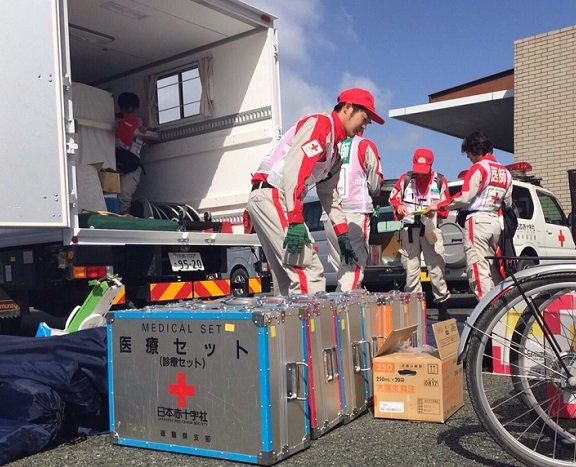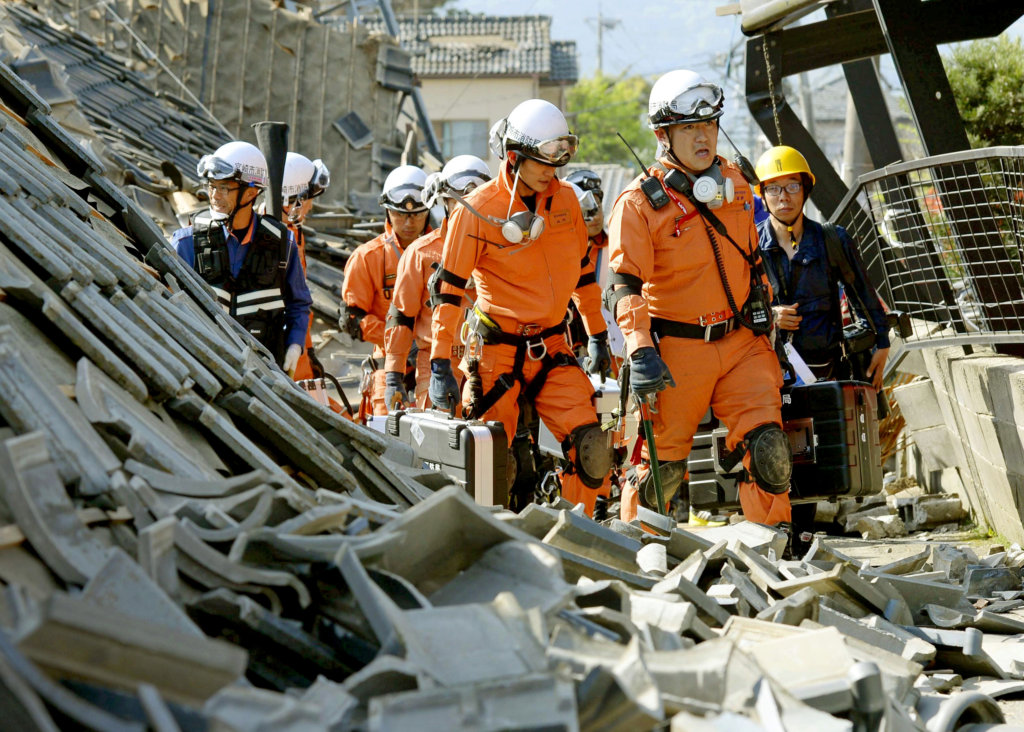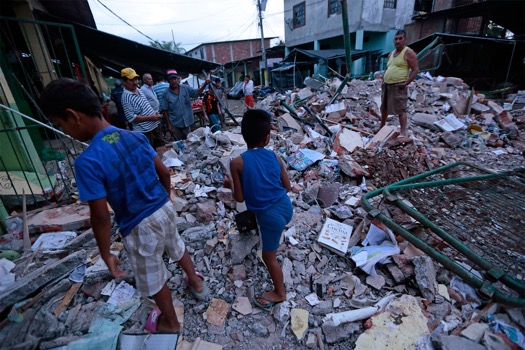Earthquakes in Japan and Ecuador: Two Very Different Disaster Responses

We talk a lot about not relying on the government for assistance following a major disaster. In most conversations, the government’s handling of Hurricane Katrina seems to get the most attention. However, the recent quakes in Japan and Ecuador highlight important contrasts that apply to all of us as well.
Governmental Responses
The government’s response to each disaster is a key component to the success or failure of recovery efforts. Disaster preparedness is a big role that the government has assumed in the wake of 9/11. While there is a lot of criticism to go around, and justifiably so, the reality is that we are in a much better place preparation-wise than we were 20 years ago. On the other hand, we can and should be doing a heck of a lot more.

In the aftermath of the Japanese quake, the level of preparedness that exists is clearly evident. Mounting rescue efforts, establishing shelters, chains of distribution for relief supplies and security are all organized and implemented like a well-oiled machine. While the death toll continues to climb weeks after the quake, and many people are still not accounted for, things could be a lot worse if the country was not as prepared.
On the other hand, the aftermath of the quake in Ecuador is much more severe. Poor infrastructure, lack of earthquake-proof construction, a weak government, lack of money and high crime rates all contribute to the long-term toll this disaster will have on ordinary citizens. Looting started to take place minutes after the disaster. People are sleeping on the streets instead of shelters or in their cars. The military has taken over the affected area, and reports of police and soldiers pillaging and taking advantage of citizens are commonplace.
In both cases there are plenty of examples of how the government can not possibly meet all of the needs of the victims. Even in the best case scenario, middle-class residents in Japan have been sleeping in cars for days. While basic services such as sanitation, food and water are pretty much addressed, people are still homeless, unemployed and unsure of their future. In Ecuador, the problem is much more severe, and there will be a huge dependence on foreign assistance in order to provide minimal support.
The moral of the story? Be prepared so that you have something to fall back on in order to fill in the gaps that are created by governmental disaster responses.
The People

Another stark difference between Japan and Ecuador is the disposition of the population at large. Japanese society is nowhere near as violent as Latin American culture. Guns are almost non-existent. A sense of mutual cooperation and helping thy neighbor is an integral part of the Japanese social ethic. The expectation of police and military personnel to serve honorably and not take advantage of citizens is strong. In Ecuador, bribes, corruption and abuses by those who are in power is an accepted way of life. This becomes more exacerbated during times of crisis.

In the United States, we tend to fall somewhere in the middle. People do rise to the occasion and go out of their way to help their fellow man. This evident in small cites and towns throughout the country in the wake of tornadoes and hurricanes. However, crime after a disaster, especially in urban areas, is a serious problem that is almost impossible to contain. People also engage in price-gouging, scams and violent acts in order to prey on the weak and helpless.
The Aftermath

It goes without saying that Japan is far more equipped to rebuild areas devastated by the quake. They are organized. They are meticulous, and they are positioned to clear rubble, assess damage and then get busy replacing what has been lost. Ecuador on the other hand has gone on record to say that it will take years before disaster areas will be restored.

How governments, insurance companies and society as a whole responds in the aftermath of a large earthquake impacts lives. How people are cared for, resettled and able to rebuild their lives differs from place to place as well. Even in the United States, differences exist between disaster management capabilities from community to community. These realities are exactly the reason that we need to be prepared to manage on our own for a long time following a crisis.
Remember that surviving the disaster itself is almost the easy part. You either live or die. If you live, then you need to be prepared to move on with your life. What you face and how you cope with this transitional period will depend on your level of preparedness and your ability to adapt.
Start preparing now so that you won’t be part of the masses who will be at the mercy of disaster recovery officials during this difficult time. Learn from what is happening in Japan and Ecuador, and take steps to minimize the chances of being in a similar situation as the victims in both countries.

